Premium Only Content
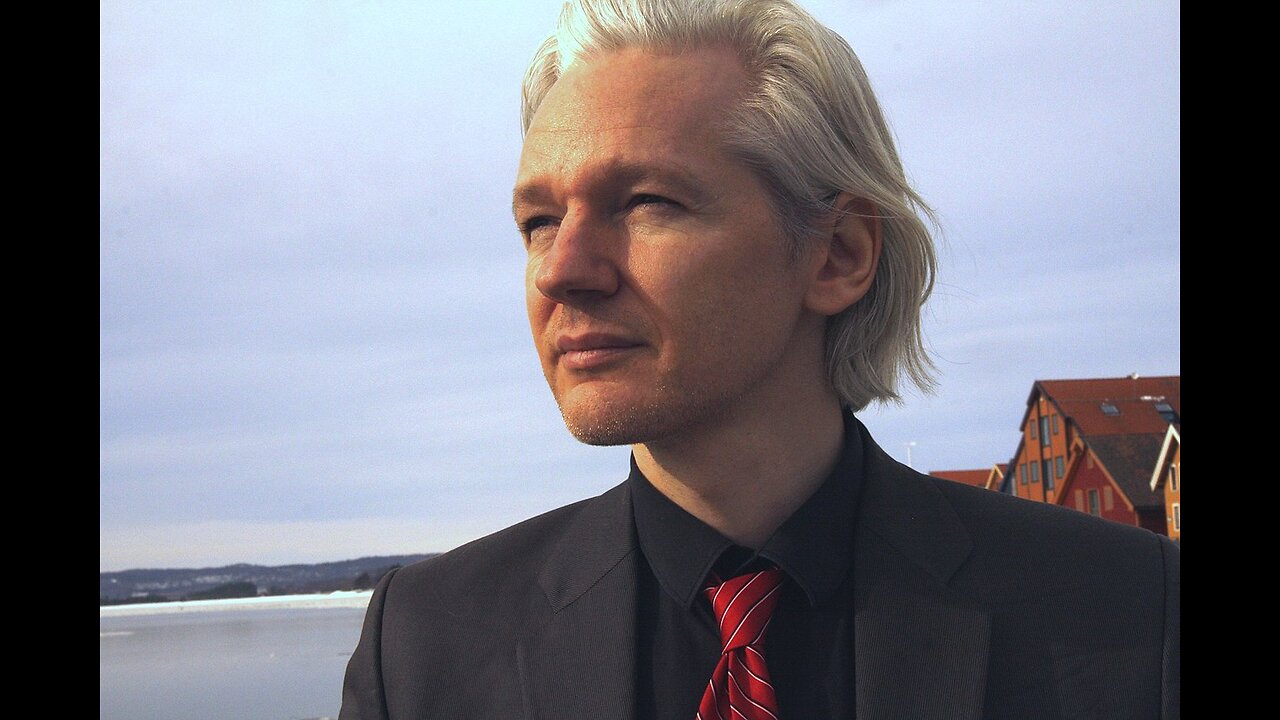
"How Do You Get to Be the Most Dangerous Man in the World?" (2010)
Daniel Ellsberg and When Nixon Proposed Nuclear War: https://www.patreon.com/posts/when-nixon-war-73577462
WikiLeaks is an international non-profit organization that publishes secret information and classified media from anonymous sources. In 2010, WikiLeaks released a trove of classified documents related to the Iraq War, known as the Iraq War Logs. The release of these documents was considered one of the largest leaks in the history of the United States military.
The Iraq War Logs included more than 391,000 classified documents that provided an unfiltered and detailed account of the war in Iraq, covering the period from 2004 to 2009. The documents included reports from military personnel on incidents, casualties, and actions taken by U.S. and coalition forces in Iraq, as well as reports on the Iraqi security forces and civilians.
The documents revealed several incidents of abuse and torture of prisoners by Iraqi security forces and showed the U.S. military's involvement in covering up these abuses. They also shed light on the number of civilian casualties during the war and the military's failure to accurately report these numbers.
The release of the Iraq War Logs sparked controversy and debate about the legality of the war and the U.S. military's actions in Iraq. It also sparked a debate about the role of whistleblowers and the importance of transparency in government and military affairs.
The U.S. government condemned the release of the documents, stating that it put U.S. soldiers and Iraqi civilians at risk. The U.S. Department of Justice launched an investigation into WikiLeaks and its founder, Julian Assange, accusing him of violating the Espionage Act by publishing classified information. Assange was later arrested and held in the United Kingdom, where he fought extradition to the United States.
Image: Espen Moe, CC BY 2.0 https://creativecommons.org/licenses/by/2.0, via Wikimedia Commons
WikiLeaks (/ˈwɪkiliːks/) is an NGO owned by Icelandic company Sunshine Press Productions ehf[3][4][5][6] that runs a website that has published news leaks[7] and classified media provided by anonymous sources.[8] It was founded by Julian Assange, an Australian editor, publisher, and activist, who is currently fighting extradition to the United States over his work with WikiLeaks.[9] Since September 2018, Kristinn Hrafnsson has served as its editor-in-chief.[10][11] Its website stated in 2015 that it had released online 10 million documents since beginning in 2006 in Iceland.[12] WikiLeaks' most recent publication was in 2021 and its most recent publication of original documents was in 2019.[13] Beginning in November 2022, many of the documents could not be accessed.[13][14][15][16]
The organisation has released document caches that exposed serious violations of human rights and civil liberties, including the Collateral Murder footage from the 12 July 2007 Baghdad airstrike in which Iraqi Reuters journalists were among several civilians killed by a U.S. helicopter crew.[17] WikiLeaks has also published leaks such as diplomatic cables from the United States and Saudi Arabia,[18][19] emails from the governments of Syria[20][21] and Turkey,[22][23][24] corruption in Kenya[25][26] and at Samherji.[27] WikiLeaks has also published documents exposing surveillance by the Central Intelligence Agency,[28][29] National Security Agency[30][31] and private corporations. During the 2016 U.S. presidential election campaign, WikiLeaks released emails from the Democratic National Committee and from Hillary Clinton's campaign manager, showing that the party's national committee favoured Clinton in the primaries. These releases resulted in the resignation of Debbie Wasserman Schultz as chairwoman of the Democratic National Committee (DNC) and caused significant harm to the Clinton campaign.[32] During the campaign, WikiLeaks promoted false conspiracy theories about Hillary Clinton, the Democratic Party and the murder of Seth Rich.[33][34][35]
WikiLeaks has won a number of awards and has been commended for exposing state and corporate secrets, increasing transparency, assisting freedom of the press, and enhancing democratic discourse while challenging powerful institutions. WikiLeaks and some of its supporters say the organisation's publications have a perfect authenticity record. The organisation has been the target of campaigns to discredit it, including aborted ones by Palantir and HBGary. WikiLeaks has also had its donation systems disrupted by problems with its payment processors. As a result, the Wau Holland Foundation helps process WikiLeaks' donations.
The organisation has been criticised for inadequately curating its content and violating the personal privacy of individuals. WikiLeaks has, for instance, revealed Social Security numbers, medical information, credit card numbers and details of suicide attempts.[36][37][38] Various news organisations, activists, journalists and former members have also criticised the organisation over allegations of anti-semitism, an anti-Clinton and pro-Trump bias, various associations with the Russian government, a history of buying and selling leaks, and a lack of internal transparency. Journalists have also criticised the organisation for promoting false flag conspiracy theories, and its exaggerated and misleading descriptions of the contents of leaks. The CIA defined the organisation as a "non-state hostile intelligence service" after the release of Vault 7.[39]
History
[icon]
This section needs expansion. You can help by adding to it. (February 2023)
Founding
Julian Assange is a founding member of the WikiLeaks staff.
The inspiration for WikiLeaks was Daniel Ellsberg's release of the Pentagon Papers in 1971. Assange built WikiLeaks to shorten the time between a leak and its coverage by the media. WikiLeaks was established in Australia but its servers were soon moved to Sweden and other countries that provided more legal protection for the media.[40]
The wikileaks.org domain name was registered on 4 October 2006.[2] The website was established and published its first document in December 2006.[41][42] Its founders and early volunteers were once described as a mixture of Asian dissidents, journalists, mathematicians, and start-up company technologists from the United States, Taiwan, Europe, Australia, and South Africa.[43] In January 2007, WikiLeaks organizer James Chen[44][45][46] told TIME that "three advisors have been detained by Asian government, one of us for over six years."[47] Before his arrest, WikiLeaks was usually represented in public by Julian Assange, who has described himself as "the heart and soul of this organisation, its founder, philosopher, spokesperson, original coder, organiser, financier, and all the rest".[48][49]
Assange formed an informal advisory board in the early days of WikiLeaks, filling it with journalists, political activists and computer specialists.[50] Most of the members told Wired that they hadn't done much advising and had little involvement with WikiLeaks.[50] Several members said they didn't know they were mentioned on the site, or how they got there.[51] Computer security expert Ben Laurie said he had been a member of the board "since before the beginning", but he wasn't "really sure what the advisory board means."[50] Former board member Phillip Adams criticised the board, saying that Assange "has never asked for advice. The advisory board was pretty clearly window dressing, so he went for people identified with progressive policies around the place."[52] Assange responded by calling the advisory board "pretty informal".[52]
When asked to join their initial advisory board, Steven Aftergood of the Federation of American Scientists declined and told TIME that "they have a very idealistic view of the nature of leaking and its impact. They seem to think that most leakers are crusading do-gooders who are single-handedly battling one evil empire or another."[53] In January 2007, John Young was dropped from the WikiLeaks network after questioning plans for a multimillion dollar fundraising goal.[54] He accused the organisation of being a CIA conduit and published 150 pages of WikiLeaks emails.[50][55][56] According to Wired, the emails are full of rhetoric and arguments over creating a profile for themselves, political impact and transparency around the world.[50][57][58]
The initial tranche of WikiLeaks' documents came from a WikiLeaks' activist who owned a server that was a node in the Tor network. After they noticed that Chinese hackers used the network to gather information from foreign governments, the activist began recording the information. This let Assange show potential contributors that WikiLeaks was viable and say they had "received over one million documents from thirteen countries".[42]
In February 2010, WikiLeaks helped propose the Icelandic Modern Media Initiative legislation to establish a "journalism safe haven" in Iceland.[59] In June, the parliament voted unanimously for the resolution.[60]
2010 internal dissent
A series of resignations of key members of WikiLeaks began in September 2010, started by Assange's unliteral decision to release the Iraq War logs the next month, his internal conflicts with other members and his response to sexual assault allegations.[61][62][63][64] According to Herbert Snorrason, "We found out that the level of redactions performed on the Afghanistan documents was not sufficient. I announced that if the next batch did not receive full attention, I would not be willing to cooperate."[64]
On 25 September 2010, after being suspended by Assange for "disloyalty, insubordination and destabilisation", Daniel Domscheit-Berg, the German spokesman for WikiLeaks, told Der Spiegel that he was resigning, saying "WikiLeaks has a structural problem. I no longer want to take responsibility for it, and that's why I am leaving the project."[65][66] Assange accused Domscheit-Berg of leaking information to Newsweek, with Domscheit-Berg claiming that the WikiLeaks team was unhappy with Assange's management and handling of the Afghan war document releases.[66][67] Daniel Domscheit-Berg wanted greater transparency in the articles released to the public.[68] When Domscheit-Berg resigned, several other staffers also broke with Assange[66][69] to start OpenLeaks, a new leak organisation and website with a different management and distribution philosophy.[65][70]
WikiLeaks and other sources later alleged that Domscheit-Berg had copied and then deleted over 3500 unpublished whistleblower communications with some communications[71] containing hundreds of documents,[72][73][74][75] including the US government's No Fly List,[76] 5 GB of Bank of America leaks,[77] insider information from 20 neo-Nazi organisations,[76][78] evidence of torture and government abuse of a Latin American country and US intercept information for "over a hundred Internet companies".[79][80] Assange stated that Domscheit-Berg had deleted video files of the Granai massacre by a US Bomber. WikiLeaks had scheduled the video for publication before its deletion.[81]
Domscheit-Berg said he took the files from WikiLeaks because he didn't trust its security. In Domscheit-Berg's book he wrote: "To this day, we are waiting for Julian to restore security, so that we can return the material to him, which was on the submission platform."[82][83][84] In August 2011, Domscheit-Berg claimed he permanently deleted the files "in order to ensure that the sources are not compromised."[85] He said that WikiLeaks' claims about the Bank of America files were "false and misleading."[86] According to Domscheit-Berg, the Bank of America files were lost because of an IT problem when one of WikiLeaks storage drives crashed and they lost it.[72]
The Architect left with Domscheit-Berg, taking the code[87] behind the submission system with him.[88][82][83] WikiLeaks submissions stayed offline until 2015.[89][90] Herbert Snorrason, a 25-year-old Icelandic university student, resigned after he challenged Assange on his decision to suspend Domscheit-Berg and was bluntly rebuked.[66] Iceland MP Birgitta Jónsdóttir also left WikiLeaks, citing lack of transparency, lack of structure, and poor communication flow in the organisation.[91] James Ball left WikiLeaks over disputes about Assange's handling of finances, and allegations including antisemitism against fellow WikiLeaks member Israel Shamir.[92][93][94] According to the British newspaper, The Independent, at least a dozen key supporters of WikiLeaks left the website during 2010.[95]
Actions against WikiLeaks
Campaigns to discredit WikiLeaks
See also: Reception_of_WikiLeaks § Response_from_corporations
Writing for The Guardian in 2010, Nick Davies said there were low-level attempts to smear WikiLeaks, including online accusations against Assange. In 2010, Wikileaks published a US military document containing a plan to "destroy the center of gravity" of Wikileaks by attacking its trustworthiness. It suggests the identification and exposure of WikiLeaks' sources to "deter others from using WikiLeaks".[96][97]
In 2010 the Bank of America employed the services of a collection of information security firms, known as Team Themis, when the bank became concerned about information that WikiLeaks held about it and was planning to release. Team Themis included private intelligence and security firms HBGary Federal, Palantir Technologies and Berico Technologies.[98][99][100][101][102] In 2011 hacktivist group Anonymous released emails it had obtained from HBGary Federal. Among other things, the emails revealed that Team Themis had planned to expose the workings of WikiLeaks using disinformation and cyberattacks. The plans were not implemented and, after the emails were published, Palantir CEO Alex Karp issued a public apology for his company's role.[99][103]
Other
See also: Reception of WikiLeaks § Response from the financial industry, and WikiLeaks § Hosting
In December 2010, PayPal suspended the WikiLeaks account after the State Department sent them a letter.[104] Mastercard and Visa Europe also decided to stop accepting payments to WikiLeaks. Bank of America, Amazon and Swiss bank PostFinance had previously stopped dealing with WikiLeaks. Datacell, the IT company that enabled WikiLeaks to accept credit and debit card donations, said Visa's action was the result of political pressure.[104][105] WikiLeaks called this the Banking Blockade.[106]
Cyber attacks and legal restrictions have forced WikiLeaks to change hosts several times.[107][108][109]
2012-2015
In July 2012, WikiLeaks claimed credit for a fake New York Times website and article by Bill Keller.[110][111][112][113] The hoax prompted criticism from commentors and the public, who said it hurt WikiLeaks' credibility. Glenn Greenwald wrote that it might have been satire but "it doesn’t strike me as a good idea for a group that relies on its credibility when it comes to the authenticity of what they publish — and which thus far has had a stellar record in that regard — to be making boastful claims that they published forged documents. I understand and appreciate the satire, but in this case, it directly conflicts with, and undermines, the primary value of WikiLeaks."[111][114][115] WikiLeaks said they wanted to bring attention to the banking blockade.[110]
In January 2013 shortly after he died, WikiLeaks said that Aaron Swartz had helped WikiLeaks and talked to talked Julian Assange in 2010 and 2011. WikiLeaks also said they had "strong reasons to believe, but cannot prove" he may have been a source, possibly breaking WikiLeaks' rules about source anonymity. Wikileaks may have made the statements to imply that Swartz was targetted by the US Attorney's Office and Secret Service in order to get at WikiLeaks.[116][117]
In 2013, the organisation assisted Edward Snowden (who is responsible for the 2013 mass surveillance disclosures) in leaving Hong Kong. Sarah Harrison, a WikiLeaks activist, accompanied Snowden on the flight. Scott Shane of The New York Times stated that the WikiLeaks involvement "shows that despite its shoestring staff, limited fund-raising from a boycott by major financial firms, and defections prompted by Mr. Assange's personal troubles and abrasive style, it remains a force to be reckoned with on the global stage."[118]
The WikiLeaks Party was created in 2013 in part to support Julian Assange's failed bid for a Senate seat in Australia in the 2013 election, where they won 0.66% of the national vote.[119] Assange said the party would advance WikiLeaks' objectives of promoting openness in government and politics and that it would combat intrusions on individual privacy.[119][120][121][122] In December 2013, a delegation from the party, including its chairman John Shipton, visited Syria and met with President Bashar al-Assad with the goals of demonstrating "solidarity with the Syrian people and their nation" and improving the party's understanding of the country's civil war. The meeting with Assad was criticized by the Australian Prime Minister, Foreign Minister and many WikiLeaks supporters.[123][124] Shipton stated that the meeting with al-Assad was "just a matter of good manners" and that the delegation had also met with members of the Syrian opposition.[124] However, these meetings with the opposition have not been verified. The WikiLeaks Party was deregistered by the Australian Electoral Commission on 23 July 2015 for lack of members under s.137(4) of the Electoral Act.[125][126][127]
In the wake of the Charlie Hebdo shooting in January 2015, the WikiLeaks Twitter account wrote that "the Jewish pro-censorship lobby legitimized attacks", referring to the trial of Maurice Sinet.[128] In July 2016, the same account suggested that triple parentheses, or (((echoes))) – a tool used by neo-Nazis to identify Jews on Twitter, appropriated by several Jews online out of solidarity – had been used as a way for "establishment climbers" to identify one another.[129][130] In leaked internal conversations, the WikiLeaks Twitter account commented on Associated Press reporter Raphael Satter who had written an article critical of WikiLeaks. WikiLeaks tweeted that "[Satter]'s always ben(sic) a rat. But he's jewish and engaged with the ((()))) issue".[131]
In 2015, WikiLeaks began issuing "bounties" of up to $100,000 for leaks.[132] Assange had said in 2010 that WikiLeaks didn't but "would have no problem giving sources cash" and that there were systems in Belgium to let them.[133] WikiLeaks has issued crowd-sourced rewards for the TTIP chapters, the TPP[132] and information on the Kunduz Massacre.[134][135] WikiLeaks has issued other bounties for leaks on Troika Crisis Planning,[136] LabourLeaks,[137] Trump-Comey tapes,[138] evidence of Obama administration officials destroying information,[139] 2016 U.S. Presidential election-related information,[140] information to get a reporter at The Intercept fired over the Reality Winner case,[141] the U.S. Senate torture report,[142] and documents and Sweden's vote on placing Saudi Arabia on the UN Women's Rights Commission.[143] WikiLeaks has defended the practice with their vetting record, saying "police rewards produce results. So do journalistic rewards."[135]
Its website stated in 2015 that it had released 10 million documents online.[12]
Promotion of false conspiracy theories
In 2016 and 2017, WikiLeaks promoted several false conspiracy theories. Most of them were related to the 2016 United States presidential election.
Murder of Seth Rich
Further information: Murder of Seth Rich
WikiLeaks promoted conspiracy theories about the murder of Seth Rich.[144][145][146] Unfounded conspiracy theories, spread by some right-wing figures and media outlets, hold that Rich was the source of leaked emails and was killed for working with WikiLeaks.[147] WikiLeaks fuelled such theories when it offered a $20,000 reward for information on Rich's killer and when Assange implied that Rich was the source of the DNC leaks,[148] although no evidence supports that claim.[149][150] Special Counsel Robert Mueller's report into Russian interference in the 2016 election said that Assange "implied falsely" that Rich was the source in order to obscure that Russia was the actual source.[151][152][153][154]
Democratic Party and Hillary Clinton
WikiLeaks popularised conspiracy theories about the Democratic Party and Hillary Clinton, such as tweeting articles which suggested Clinton campaign chairman John Podesta engaged in satanic rituals,[33][155][156] implying that the Democratic Party had Seth Rich killed,[34] claiming that Hillary Clinton wanted to drone strike Assange,[157] suggesting that Clinton wore earpieces to debates and interviews,[158] promoting thinly sourced theories about Clinton's health and according to Bloomberg creating "anti-Clinton theories out of whole cloth",[35][159][160] and promoting a conspiracy theory from a Donald Trump-related Internet community tying the Clinton campaign to child kidnapper Laura Silsby.[161]
Promotion of false flag theories
On the day the Vault 7 documents were first released, WikiLeaks described UMBRAGE as "a substantial library of attack techniques 'stolen' from malware produced in other states including the Russian Federation," and tweeted, "CIA steals other groups virus and malware facilitating false flag attacks."[162] A conspiracy theory soon emerged alleging that the CIA framed the Russian government for interfering in the 2016 U.S. elections. Conservative commentators such as Sean Hannity and Ann Coulter speculated about this possibility on Twitter, and Rush Limbaugh discussed it on his radio show.[163] Russian foreign minister Sergey Lavrov said that Vault 7 showed that "the CIA could get access to such 'fingerprints' and then use them."[162]
Cybersecurity writers, such as Ben Buchanan and Kevin Poulsen, were sceptical of those theories.[164][165] Poulsen wrote, "The leaked catalog isn't organized by country of origin, and the specific malware used by the Russian DNC hackers is nowhere on the list."[164]
In April 2017, the WikiLeaks Twitter account suggested that the Khan Shaykhun chemical attack, which international human rights organisations and governments of the United States, United Kingdom, Turkey, Saudi Arabia, France, and Israel attributed to the Syrian government, was a false flag attack.[166] WikiLeaks stated that "while western establishment media beat the drum for more war in Syria the matter is far from clear", and shared a video by a Syrian activist who claimed that Islamist extremists were probably behind the chemical attack, not the Syrian government.[166]
Later years
On 17 October 2016, WikiLeaks announced that a "state party" had severed the Internet connection of Julian Assange at the Ecuadorian embassy. WikiLeaks blamed United States Secretary of State John Kerry of pressuring the Ecuadorian government in severing Assange's Internet, an accusation which the United States State Department denied.[167] The Ecuadorian government stated that it had "temporarily" severed Assange's Internet connection because of WikiLeaks' release of documents "impacting on the U.S. election campaign," although it also stated that this was not meant to prevent WikiLeaks from operating.[168]
In 2018, 11,000 messages from a private chat with WikiLeaks and key supporters from May 2015 through November 2017 leaked. The messages showed WikiLeaks plotting against critics with online attack campaigns and false identities, and contain political bias, sexism, misogyny, and anti-Semitism.[131][169][170] The messages were leaked by a former associate of Assange who had created the group at WikiLeaks' request.[171]
In January 2019, WikiLeaks sent journalists a "confidential legal communication not for publication" with a list of 140 things not to say about Julian Assange that WikiLeaks said were "false and defamatory".[172][173] Soon after the list leaked online, WikiLeaks posted a heavily edited version of it.[174] The group was criticised and mocked for the list and their handling of it.[175][176][177][178]
Administration
WikiLeaks describes itself as "an uncensorable system for untraceable mass document leaking"[179] and "a project of the Sunshine Press,"[3][5][180] a non-profit organisation based in Iceland.[181][182] In 2010, Julian Assange and Kristinn Hrafnsson registered Sunshine Press Productions ehf[6] as a business without a headquarters in Iceland.[183][184] Assange serves as the Director of Sunshine Press Productions ehf and is on the board of directors with Hrafnsson and Ingi Ragnar Ingason.[185][186][187] Gavin MacFadyen was a deputy board member.[186] According to a January 2010 interview, the WikiLeaks team then consisted of five people working full-time and about 800 people who worked occasionally, none of whom were compensated.[133]
Despite some public confusion, related to the fact both sites use the "wiki" name and website design template, WikiLeaks and Wikipedia are not affiliated.[188] Wikia, a for-profit corporation affiliated loosely with the Wikimedia Foundation, purchased several WikiLeaks-related domain names as a "protective brand measure" in 2007.[189]
In November 2022, many of WikiLeaks releases disappeared from the website, bringing the number of documents from around 10 million to around 3,000. Other reported issues with the site included the websites search ability not working and a broken submission page.[190][191]
Editorial policy
WikiLeaks established an editorial policy that accepted only documents that were "of political, diplomatic, historical or ethical interest" (and excluded "material that is already publicly available").[192] This coincided with early criticism that having no editorial policy would drive out good material with spam and promote "automated or indiscriminate publication of confidential records".[193] The original FAQ is no longer in effect, and no one can post or edit documents on WikiLeaks. Now, submissions to WikiLeaks are reviewed by anonymous WikiLeaks reviewers, and documents that do not meet the editorial criteria are rejected. By 2008, the revised FAQ stated: "Anybody can post comments to it. [...] Users can publicly discuss documents and analyse their credibility and veracity."[194] After the 2010 reorganisation, posting new comments on leaks was no longer possible.[195]
According to WikiLeaks, the goal of the organisation is "to bring important news and information to the public … One of our most important activities is to publish original source material alongside our news stories so readers and historians alike can see evidence of the truth." It also seeks to ensure that journalists and whistleblowers are not prosecuted for emailing sensitive or classified documents. The online "drop box" is described by the WikiLeaks website as "an innovative, secure and anonymous way for sources to leak information to [WikiLeaks] journalists".[196]
An embargo agreement made by WikiLeaks in 2012 included a timeline for when emails could be written about, due in part to "elections around the world and legal matters WikiLeaks and Julian are involved in."[197][198] In 2017, WikiLeaks told Foreign Policy that they sometimes scheduled releases around high-profile events.[199]
In response to a question in 2010 about whether WikiLeaks would release information that he knew might get someone killed, Assange said that he had instituted a "harm-minimization policy." This policy meant that people named in some documents might be contacted before publication to warn them, but that there were also times were members of WikiLeaks might have "blood on our hands."[42] One member of WikiLeaks told The New Yorker they were initially uncomfortable with Assange's editorial policy, but changed her mind because she thought no one had been unjustly harmed.[42]
In an August 2010 open letter, the non-governmental organisation Reporters Without Borders praised WikiLeaks' past usefulness in exposing "serious violations of human rights and civil liberties" but criticised the organisation over a perceived absence of editorial control, stating "Journalistic work involves the selection of information. The argument with which you defend yourself, namely that WikiLeaks is not made up of journalists, is not convincing."[200]
In a 2013 resolution, the International Federation of Journalists, a trade union of journalists, called WikiLeaks a "new breed of media organisation" that "offers important opportunities for media organisations".[201] Harvard professor Yochai Benkler praised WikiLeaks as a new form of journalistic enterprise,[202] testifying at the court-martial of Chelsea Manning that "WikiLeaks did serve a particular journalistic function," and that the "range of the journalist's privilege" is "a hard line to draw".[203]
Others do not consider WikiLeaks to be journalistic in nature. Media ethicist Kelly McBride of the Poynter Institute for Media Studies wrote in 2011: "WikiLeaks might grow into a journalist endeavor. But it's not there yet."[204] Bill Keller of The New York Times considers WikiLeaks to be a "complicated source" rather than a journalistic partner.[204] Prominent First Amendment lawyer Floyd Abrams writes that WikiLeaks is not a journalistic organisation, but instead "an organization of political activists; … a source for journalists; and … a conduit of leaked information to the press and the public".[205] In support of his opinion, referring to Assange's statements that WikiLeaks reads only a small fraction of information before deciding to publish it, Abrams wrote: "No journalistic entity I have ever heard of—none—simply releases to the world an elephantine amount of material it has not read."[205]
Financing
WikiLeaks is a self-described not-for-profit organisation, funded largely by volunteers, and is dependent on private donations, exclusivity contracts[133] and concessions from their media partners.[206] Its main financing methods include conventional bank transfers and online payment systems. According to Assange, WikiLeaks' lawyers often work pro bono. Assange has said that in some cases legal aid has been donated by media organisations such as the Associated Press, the Los Angeles Times, and the National Newspaper Publishers Association.[133] Assange said in early 2010 that WikiLeaks' only revenue consists of donations, but it has considered other options including auctioning early access to documents.[133] In September 2010, Assange said that WikiLeaks received millions of dollars in media partnerships, explaining they "win concessions in relation to the number of journalists that will be put on it and how big they'll run with it."[206]
In 2010, Assange said the organisation was registered as a library in Australia, a foundation in France, and a newspaper in Sweden, and that it also used two United States-based non-profit 501c3 organisations for funding purposes.[207]
2010-2013
In January 2010, WikiLeaks temporarily shut down its website while management appealed for donations.[208] Previously published material was no longer available, although some could still be accessed on unofficial mirror websites.[209] WikiLeaks stated that it would resume full operation once the operational costs were paid.[208] WikiLeaks saw this as a kind of work stoppage "to ensure that everyone who is involved stops normal work and actually spends time raising revenue".[133] While the organisation initially planned for funds to be secured by 6 January 2010, it was not until 3 February 2010 that WikiLeaks announced that its minimum fundraising goal had been achieved.[210]The Wau Holland Foundation, one of the WikiLeaks' main funding channels, stated that they received more than €900,000 in public donations between October 2009 and December 2010, of which €370,000 has been passed on to WikiLeaks. Hendrik Fulda, vice-president of the Wau Holland Foundation, said that every new WikiLeaks publication brought "a wave of support", and that donations were strongest in the weeks after WikiLeaks started publishing leaked diplomatic cables.[211][212] According to Assange, WikiLeaks' media partnerships for the cables earned them almost $2 million three months after they started publishing.[206] In December 2010, the Wau Holland Foundation stated that Julian Assange and three other permanent employees had begun to receive salaries.[213]
During 2010, WikiLeaks received over $1.9 million in donations. About $930,000 came through PayPal donations, with the rest coming through bank transfers.[214] In 2011, donations dropped sharply and WikiLeaks received only around $180,000 in donations, while their expenses increased from $519,000 to $850,000.[215] During September 2011, WikiLeaks began auctioning items on eBay to raise funds.[216] Wikileaks started accepting bitcoin in 2011 as a currency which could not be blocked by financial intuitions or a government.[217][218][219] In 2012, WikiLeaks raised only $68,000 through the Wau Holland Foundation and had expenses more than $507,000.[215] In 2013, WikiLeaks and Wau Holland Foundation agreed on a new framework contract which Wau Holland Foundation would only cover direct costs such as server, ISP, project coordination and translation costs.[220] Between January and May, Wau Holland Foundation was only able to cover $47,000 in essential infrastructure for WikiLeaks, but not an additional $400,000 that was submitted "to cover publishing campaigns and logistics in 2012".[215]
Financial blockade
See also: Reception of WikiLeaks § Response from the financial industry
On 22 January 2010, the Internet payment intermediary PayPal suspended WikiLeaks' donation account and froze its assets. WikiLeaks said that this had happened before, and was done for "no obvious reason".[221][222] In December 2010, PayPal suspended WikiLeaks' account, thereby stopping donations through PayPal. PayPal said it had taken action after the US State Department sent a letter to Wikileaks stating that Wikileaks' activities were illegal in the US.[104] Hendrik Fulda, vice-president of the Wau Holland Foundation, said that the Foundation had been receiving twice as many donations through PayPal as through normal banks before PayPal's decision to suspend WikiLeaks' account.[211] Mastercard and Visa Europe also decided to stop accepting payments to WikiLeaks. Bank of America, Amazon and Swiss bank PostFinance had previously stopped dealing with WikiLeaks. Datacell, the IT company that enabled WikiLeaks to accept credit and debit card donations, threatened Mastercard and Visa with legal action to enforce the resumption of payments to WikiLeaks. Datacell said Visa's action was the result of political pressure.[104][105]
In October 2011, Assange said that the financial blockade by Bank of America, Visa, MasterCard, PayPal and Western Union, had cost WikiLeaks ninety-five per cent of its revenue.[223] In 2012, an Icelandic district court ruled that Valitor, the Icelandic partner of Visa and MasterCard, was violating the law when it stopped accepting credit card donations to WikiLeaks. The court ruled that donations to WikiLeaks must resume within 14 days or Valitor would be fined US$6,000 a day.[105] In November 2012, the European Union's European Commission said they wouldn't open a formal investigation into Mastercard and Visa and blocking donations for WikiLeaks because it was unlikely to have violated EU anti-trust rules.[224]
In response to the financial blockade of Wikileaks, Glenn Greenwald and others created the Freedom of the Press Foundation in order "to block the US government from ever again being able to attack and suffocate an independent journalistic enterprise the way it did with WikiLeaks".[225]
2014-2018
In 2014, Sunshine Press Productions ehf began receiving funds from Wau Holland Foundation for WikiLeaks.[226] From 2014-2017 WikiLeaks was reimbursed for project coordination, technical preparation, removing metadata, reviewing information, communicating with media partners costs and a new submission platform and document search.[226][227][228][229] The DNC emails and Podesta emails were not funded by the Wau Holland Foundation.[230] By October 2017, WikiLeaks founder Julian Assange said the organisation had made a 50,000% return on Bitcoin.[231] By that December, they had raised at least $25 million in Bitcoin.[232][233]
In 2018, the Wau Holland Foundation reimbursed Sunshine Press Productions for WikiLeaks' publications, as well as public relations and $50,000 for legal expenses in the Democratic National Committee v. Russian Federation lawsuit.[234]
Hosting
In 2010, the website was available on multiple servers, different domain names and had an official dark web version (available on the Tor Network) as a result of a number of denial-of-service attacks and its elimination from different Domain Name System (DNS) providers.[235][236]
Until August 2010, WikiLeaks was hosted by PRQ, a company based in Sweden providing "highly secure, no-questions-asked hosting services". PRQ was reported by The Register website to have "almost no information about its clientele and maintains few if any of its own logs".[237] That month, WikiLeaks reached an agreement with the Swedish Pirate Party to host several of their servers.[238][239][240] Later, WikiLeaks was hosted mainly by the Swedish Internet service provider Bahnhof in the Pionen facility, a former nuclear bunker in Sweden.[241][242] Other servers were spread around the world with the main server located in Sweden.[243]
After the site became the target of a denial-of-service attack on its old servers, WikiLeaks moved its website to Amazon's servers.[107] Amazon later removed the website from its servers.[107] In a public statement, Amazon said that WikiLeaks was not following its terms of service. The company stated: "There were several parts they were violating. For example, our terms of service state that 'you represent and warrant that you own or otherwise control all of the rights to the content ... that use of the content you supply does not violate this policy and will not cause injury to any person or entity.' It's clear that WikiLeaks doesn't own or otherwise control all the rights to this classified content."[108] WikiLeaks was then moved to servers at OVH, a private web-hosting service in France.[244] After criticism from the French government, a judge in Paris ruled that there was no need for OVH to cease hosting WikiLeaks without more information.[245]
WikiLeaks used EveryDNS, but was dropped by the company after distributed denial-of-service (DDoS) attacks against WikiLeaks hurt the quality of service for its other customers. Supporters of WikiLeaks waged verbal and DDoS attacks on EveryDNS. Because of a typographical error in blogs mistaking EveryDNS for competitor EasyDNS, the sizeable Internet backlash hit EasyDNS. Despite that, EasyDNS began providing WikiLeaks with DNS service on "two 'battle hardened' servers" to protect the quality of service for its other customers.[109]
Insurance files
WikiLeaks has used heavily encrypted files[246][247] to protect their publications against censorship,[248] to pre-release publications,[249] and as protection against arrest.[250][251] The files have been described as "insurance",[246][252][253] a "dead man's switch",[248] "a kind of doomsday option",[250][251] and a "poison pill".[254] The insurance files sometimes come with pre-commitment hashes.[255][clarification needed]
WikiLeaks staff have said that "insurance files are encrypted copies of unpublished documents submitted to us. We do this periodically, and especially at moments of high pressure on us, to ensure the documents can not be lost and history preserved. You will not be able to see the contents of any of our insurance files, until and unless the we are in a position where we must release the key. But you can download them and help spread them to ensure their safe keeping."[256]
On 29 July 2010 WikiLeaks added an "Insurance file" to the Afghan War Diary page. The file is AES encrypted.[257][258] There has been speculation that it was intended to serve as insurance in case the WikiLeaks website or its spokesman Julian Assange are incapacitated, upon which the passphrase could be published.[259][260] After the first few days' release of the US diplomatic cables starting 28 November 2010, the US television broadcasting company CBS predicted that "If anything happens to Assange or the website, a key will go out to unlock the files. There would then be no way to stop the information from spreading like wildfire because so many people already have copies."[261] CBS correspondent Declan McCullagh stated, "What most folks are speculating is that the insurance file contains unreleased information that would be especially embarrassing to the US government if it were released."[261]
In August 2013, WikiLeaks posted three insurance files as torrents, totalling 400 gigabytes.[248][262] WikiLeaks said they "encrypted versions of upcoming publication data ("insurance") from time to time to nullify attempts at prior restraint."[248]
In June 2016, WikiLeaks posted an 88 gigabyte insurance file.[citation needed] On 16 October 2016, WikiLeaks tweeted an insurance file about Ecuador.[263] In November, they posted insurance files for the US, the UK and Ecuador,[264] and an unlabelled 90 gigabyte insurance file was posted.[255][additional citation(s) needed]
In January 2017, On 7 March 2017, WikiLeaks posted an encrypted file containing the Vault 7 Year Zero release.[265] WikiLeaks had planned to release them later, but released them online later that day because of cyber attacks.[266] The password, SplinterItIntoAThousandPiecesAndScatterItIntoTheWinds, was a reference to an alleged quote by President Kennedy.[249]
Staff
As of June 2009, the website had more than 1,200 registered volunteers.[43][52][267]
Daniel Domscheit-Berg, Sarah Harrison, Kristinn Hrafnsson and Joseph Farrell are notable people who have been involved in the project.[268][66] Harrison is also a member of Sunshine Press Productions along with Assange and Ingi Ragnar Ingason.[269][186] Gavin MacFadyen was acknowledged by Assange as a ″beloved director of WikiLeaks″ shortly after his death in 2016.[270] Jacob Appelbaum is the only known American who is known to have been member of WikiLeaks, acting as a senior editor and spokesman.[271][272][273] Gottfrid Svartholm had worked with WikiLeaks as a technical consultant and managed infrastructure critical to the organization.[274][275] He was also listed as part of the "decryption and transmission team" on Collateral Murder and credited for "networking" and helped with several other unknown endeavors.[276][277] Rop Gonggrijp, Birgitta Jónsdóttir, Smári McCarthy and Herbert Snorrason are WikiLeaks volunteers and members who the US government has tried to surveill with court orders.[278][279] WikiLeaks was represented in Russia by Israel Shamir and in Sweden by his son Johannes Wahlström.[280][281][94]
According to colleagues and former WikiLeaks insiders, the WikiLeaks dropbox architecture was rebuilt by a WikiLeaks programmer known to most insiders as "The Architect".[282][283][83] He also instructed another WikiLeaks technician, and some of colleagues thought he was a computer genius.[88][284][285] According to Andy Greenberg, insiders told him "when The Architect joined WikiLeaks it was a mess. It was two creaking servers without all the flashy security that Assange had promised in interviews with the media. The Architect rebuilt it from scratch."[282] According to Wired, "WikiLeaks had been running on a single server with sensitive backend components like the submission and e-mail archives connected to the public-facing Wiki page. The Architect separated the platforms and set up a number of servers in various countries."[82]
In August 2011, WikiLeaks volunteer Sigurdur Thordarson, working in his home country Iceland, contacted the FBI and, after presenting a copy of Assange's passport at the American embassy, became the first informant to work for the FBI from inside WikiLeaks, and gave the FBI several hard drives he had copied from Assange and core WikiLeaks members.[286][287] In November 2011, WikiLeaks dismissed Thordarson due to his embezzlement of $50,000, to which charge (along with several other offences) he later pleaded guilty in an Icelandic court.[288] According to Thordarson, a few months after his dismissal by WikiLeaks the FBI agreed to pay him $5,000 as compensation for work missed while meeting with agents.[289]
On 26 September 2018, it was announced that Julian Assange had appointed Kristinn Hrafnsson as editor-in-chief of WikiLeaks with Assange continuing as its publisher.[11][290]
Submissions
WikiLeaks restructured its process for contributions after its first document leaks did not gain much attention. Assange stated this was part of an attempt to take the voluntary effort typically seen in Wiki projects and "redirect it to ... material that has real potential for change".[291] Before this, the Wikileaks FAQ, under "How will Wikileaks operate?", read as of February 2007:[292]
To the user, Wikileaks will look very much like Wikipedia. Anybody can post to it, anybody can edit it. No technical knowledge is required. Leakers can post documents anonymously and untraceably. Users can publicly discuss documents and analyze their credibility and veracity. Users can discuss interpretations and context and collaboratively formulate collective publications. Users can read and write explanatory articles on leaks along with background material and context. The political relevance of documents and their verisimilitude will be revealed by a cast of thousands.
WikiLeaks originally used a "wiki" communal publication method, which ended by May 2010.[195]
In 2010 Assange said WikiLeaks received some submissions through the postal mail.[293] That year, Julian Assange said that the servers were located in Sweden and the other countries "specifically because those nations offer legal protection to the disclosures made on the site". He talks about the Swedish constitution, which gives the information–providers total legal protection.[243] It is forbidden, according to Swedish law, for any administrative authority to make inquiries about the sources of any type of newspaper.[294] These laws, and the hosting by PRQ, were meant to make it difficult for any authority to eliminate WikiLeaks; they place a burden of proof upon any complainant whose suit would circumscribe WikiLeaks' liberty. Furthermore, "WikiLeaks maintains its own servers at undisclosed locations, keeps no logs and uses military-grade encryption to protect sources and other confidential information." Such arrangements have been called "bulletproof hosting".[237]
According to some, The Architect was the engineer who rebuilt the WikiLeaks submission system "from scratch" and instructed another WikiLeaks technician.[282][283][83] According to Andy Greenberg and Wired, when The Architect joined WikiLeaks, it "was a mess" running on one or two servers "without all the flashy security that Assange had promised in interviews with the media." The Architect rebuilt it from scratch and separated the sensitive platforms from the public-facing Wiki "and set up a number of servers in various countries."[282][82]
During the 2010 reorganisation, The Architect left with Domscheit-Berg, taking the code[87] behind the submission system with him.[88][82][83][295] Assange said that the submission system was temporarily down because its backlog was too big.[296] WikiLeaks later said it was down because of Domscheit-Berg's "acts of sabotage" when he left the organisation, which had forced WikiLeaks to "overhaul the entire submission system", and the staff lacked time to do so.[82]
WikiLeaks submissions stayed offline for four and a half years, until May 2015.[89][90] While it was offline, WikiLeaks announced they were building a state-of-the-art secure submission system. The launch of the new system was delayed by security concerns in 2011.[297] During this time, WikiLeaks continued to publish documents. These publications originated from material which had been directly shared with WikiLeaks by hackers, or were the result of Wikileaks organising and republishing already-public leaks.[89] A former WikiLeaks associate said that Andy Müller-Maguhn and a colleague administered the submission server in 2016, though Müller-Maguhn denies this.[298] That October, WikiLeaks suggested "lawyer to lawyer" as an alternate submission method.[299][300][301]
By October 2021, WikiLeaks' secure chat stopped working and by February 2022, WikiLeaks' submission system and email server were offline.[302] In July 2022, a broken version of the submission system briefly relaunched with expired PGP keys and went offline after it was reported on by The Daily Dot.[303]
Legal status
The legal status of WikiLeaks is complex. In December 2010, the Australian Prime Minister Julia Gillard said that "I absolutely condemn the placement of this information on the WikiLeaks website - it's a grossly irresponsible thing to do and an illegal thing to do".[304] After criticism and a revolt within her party, she said she was referring to "the original theft of the material by a junior U.S. serviceman rather than any action by Mr Assange".[305][306]
On 2 September 2011, Australia's attorney general, Robert McClelland released a statement that the US diplomatic cables published by Wikileaks identified at least one ASIO officer, and that it was a crime in Australia to publish information which could identify an intelligence officer. McClelland said that "On occasions before this week, WikiLeaks redacted identifying features where the safety of individuals or national security could be put at risk. It appears this hasn't occurred with documents that have been distributed across the internet this week." According to The Guardian and Al Jazeera, this meant "Julian Assange could face prosecution in Australia."[307][308]
The Australian Federal Police later said that the release of the cables by WikiLeaks breached no Australian laws.[309]
United States criminal investigations
See also: Julian Assange § US criminal investigations
The US Justice Department began a criminal investigation of WikiLeaks and Julian Assange soon after the leak of diplomatic cables in 2010 began.[310] The Washington Post reported that the department was considering charges under the Espionage Act of 1917, an action which former prosecutors characterised as "difficult" because of First Amendment protections for the press.[310][311] Several Supreme Court cases (e.g. Bartnicki v. Vopper) have established previously that the American Constitution protects the re-publication of illegally gained information provided the publishers did not themselves violate any laws in acquiring it.[312]
Regarding legal threats against WikiLeaks and Assange, legal expert Ben Saul said that Assange is the target of a global smear campaign to demonise him as a criminal or as a terrorist, without any legal basis.[313][314] The US Center for Constitutional Rights issued a statement expressing alarm at the "multiple examples of legal overreach and irregularities" in his arrest.[315]
In 2010, the NSA added Assange to its Manhunting Timeline.[316] In August 2010, the Pentagon had concluded that the Afghan War documents leak broke the law. A letter from the Department of Defence general counsel said that "it is the view of the Department of Defence that WikiLeaks obtained this material in circumstances that constitute a violation of US law, and that as long as WikiLeaks holds this material, the violation of the law is ongoing."[317] In November 2010, Harold Koh, the Legal Adviser of the Department of State, wrote that the United States diplomatic cables leak "were provided in violation of US law and without regard for the grave consequences of this action" and "as long as WikiLeaks holds such material, the violation of the law is ongoing".[318][319]
In 2011, a WikiLeaks volunteer became an FBI informant[320][321][322] and Google was served with search warrants for the contents of two WikiLeaks volunteers' email accounts.[323] The NSA discussed categorising WikiLeaks as a "malicious foreign actor" for surveillance purposes.[316][324]
On 14 December 2010 the United States Department of Justice issued a subpoena directing Twitter to provide information for accounts registered to or associated with WikiLeaks.[325] Twitter decided to notify its users.[326]
By 2013, Jérémie Zimmermann, Smári McCarthy, Jacob Appelbaum, David House and Jennifer Robinson had been detained and interrogated or approached when attempts were made to recruit them as informants, often using heavy handed tactics.[327]
In 2015, it was revealed that Google had been served with search warrants for the contents of three WikiLeaks staff members' email accounts as part of a criminal investigation with alleged offences including espionage, conspiracy to commit espionage, the theft or conversion of property belonging to the United States government, violation of the Computer Fraud and Abuse Act, and criminal conspiracy.[328][329]
In April 2017, CIA director Mike Pompeo called WikiLeaks "a non-state hostile intelligence service often abetted by state actors like Russia". The official designation of Wikileaks and Julian Assange as a non-state hostile intelligence service was discussed in mid-2017 during preparation of the Intelligence Authorization Act for Fiscal Year 2018. It was eventually incorporated into the National Defense Authorization Act for Fiscal Year 2020 that became law in December 2019. The Act says "It is the sense of Congress that WikiLeaks and the senior leadership of WikiLeaks resemble a non-state hostile intelligence service often abetted by state actors and should be treated as such a service by the United States." In the opinion of some former officials, the designation allowed the CIA to launch and plan operations that did not require presidential approval or congressional notice.[330][331][332][333]
In September 2021, Yahoo! News reported that in 2017 in the wake of the Vault 7 leaks, the CIA discussed plans to kidnap or assassinate Julian Assange. They also planned to spy on associates of WikiLeaks, sow discord among its members, and steal their electronic devices. "[T]op intelligence officials lobbied the White House" to designate Wikileaks as an "information broker" to allow for more investigative tools against it, "potentially paving the way" for its prosecution. Laura Poitras described attempts to classify herself and Assange as "information brokers" rather than journalists as "bone-chilling and a threat to journalists worldwide".[334] Former CIA Director Mike Pompeo stated that the US officials who had spoken to Yahoo should be prosecuted for exposing CIA activities.[335]
In November 2018, an accidental filing with Assange's name was seen to indicate there were undisclosed charges against him.[336] On 11 April 2019, Assange was charged in a computer hacking conspiracy.[337] On 23 May, a superseding indictment was filed with charges of Conspiracy to Receive National Defense Information, Obtaining National Defense Information, Disclosure of National Defense Information, and Conspiracy to Commit Computer Intrusion.[338] On 24 June 2020, another superseding indictment was filed which added to the allegations but not the charges.[339]
After the indictment against Assange was unsealed, the Department of Justice continued to investigate Wikileaks. The day after charging Assange, prosecutors contacted Domscheit-Berg. Prosecutors also spoke with David House for about 90 minutes, who had previously testified to the grand jury in exchange for immunity.[340][341] Chelsea Manning and Jeremy Hammond refused to testify for the grand jury.[342][343]
In early 2019, the Mueller report wrote the Special Counsel's office considered charging WikiLeaks or Assange "as conspirators in the computer-intrusion conspiracy and that there were "factual uncertainties" about the role that Assange may have played in the hacks or their distribution that were "the subject of ongoing investigations" by the US Attorney’s Office.[344][345][346]
Use of leaked documents in court
In April 2011, the US Department of Justice warned military lawyers acting for Guantanamo Bay detainees against clicking of links on sites such as The New York Times that might lead to classified files published by WikiLeaks.[347] In June 2011, the US Department of Justice ruled that attorneys acting for Guantanamo Bay detainees could cite documents published by WikiLeaks. The use of the documents was subject to restrictions.[348][349]
On 8 February 2018, the UK Supreme Court unanimously allowed a document that had been leaked through WikiLeaks to be admitted as evidence. The cable had been excluded from use in an earlier part of the case before the Administrative Court based on the fact that it was a diplomatic communication, which enjoy "inviolable" protections that prevent them from being used in court outside of exceptional circumstances.[350][351] The Supreme Court ruled that since the document had already been widely disseminated, it had lost any protections it might have had.[350] The hearing was considered an important test of the Vienna Convention in relation to WikiLeaks documents.[352][350][353]
Lawsuit by the Democratic National Committee
Main article: Democratic National Committee v. Russian Federation
On 20 April 2018, the Democratic National Committee filed a multimillion-dollar lawsuit in federal district court in Manhattan against Russia, the Trump campaign, WikiLeaks and Julian Assange, alleging a conspiracy to disrupt the 2016 United States presidential election in Trump's favour.[354] The suit was dismissed with prejudice on 30 July 2019. In his judgement, Judge John Koeltl said that WikiLeaks "did not participate in any wrongdoing in obtaining the materials in the first place" and therefore was within the law in publishing the information.[355] The federal judge also wrote "The DNC's interest in keeping 'donor lists' and 'fundraising strategies' secret is dwarfed by the newsworthiness of the documents as a whole...If WikiLeaks could be held liable for publishing documents concerning the DNC's political financial and voter-engagement strategies simply because the DNC labels them 'secret' and trade secrets, then so could any newspaper or other media outlet".[356]
Publications
Main article: Information published by WikiLeaks
2006–2008
WikiLeaks posted its first document in December 2006, a decision to assassinate Somali government officials signed by rebel leader Sheikh Hassan Dahir Aweys.[42] Assange and WikiLeaks were uncertain of its authenticity, and the document’s authenticity was never determined.[42]
In August 2007, the UK newspaper The Guardian published a story about corruption by the family of the former Kenyan leader Daniel arap Moi based on information provided via WikiLeaks.[357]
In November 2007, a March 2003 copy of Standard Operating Procedures for Camp Delta detailing the protocol of the US Army at the Guantanamo Bay detention camp was released.[358][359] The document revealed that some prisoners were off-limits to the International Committee of the Red Cross, something that the US military had in the past denied repeatedly.[360] The Guantánamo Bay Manual included procedures for transferring prisoners and methods of evading protocols of the Geneva convention.[361]
In February 2008, WikiLeaks released allegations of illegal activities at the Cayman Islands branch of the Swiss Bank Julius Baer, which resulted in the bank suing WikiLeaks and obtaining an injunction which temporarily suspended the operation of wikileaks.org.[362] The California judge had Dynadot, the service provider of WikiLeaks block the site's domain (wikileaks.org) on 18 February 2008. The website was instantly mirrored, and later that month the judge overturned his previous decision citing First Amendment concerns and questions about legal jurisdiction.[363][364]
In March 2008, WikiLeaks published what they referred to as "the collected secret 'bibles' of Scientology", and three days later received letters threatening to sue them for breach of copyright.[365]
In September 2008, during the 2008 United States presidential election campaigns, the contents of a Yahoo account belonging to Sarah Palin (the running mate of Republican presidential nominee John McCain) were posted on WikiLeaks after being hacked by 4chan user David Kernell.[366][367][368]
In November 2008, the membership list of the far-right British National Party was posted to WikiLeaks, after appearing briefly on a weblog.[369] A year later, in October 2009, another list of BNP members was leaked, said by the BNP’s leader, Nick Griffin, to be a ‘malicious forgery’.[370]
2009
During 2008 and 2009, WikiLeaks published lists of forbidden or illegal web addresses for Australia, Denmark and Thailand. These were originally created to prevent access to child pornography and terrorism, but the leaks revealed that other sites featuring unrelated subjects were also listed.[371][372][373]
In January 2009, WikiLeaks released 86 telephone intercept recordings of Peruvian politicians and businessmen involved in the 2008 Peru oil scandal.[374]
In February, WikiLeaks cracked the encryption to and published NATO's Master Narrative for Afghanistan and three other classified or restricted NATO documents on the Pentagon Central Command (CENTCOM) site.[375][376]
During February, WikiLeaks released 6,780 Congressional Research Service reports[377] followed in March by a set of documents belonging to Barclays Bank that had been ordered removed from the website of The Guardian.[378]
In July, WikiLeaks released a report disclosing a "serious nuclear accident" at the Iranian Natanz nuclear facility.[379] According to media reports, the accident may have been the direct result of a cyber-attack at Iran's nuclear program, carried out with the Stuxnet computer worm, a cyber-weapon allegedly built jointly by the United States and Israel.[380][381][382]
In September, internal documents from Kaupthing Bank were leaked, from shortly before the collapse of Iceland's banking sector, which had caused the 2008–2012 Icelandic financial crisis. The document showed that suspiciously large sums of money were loaned to various owners of the bank, and large debts written off.[383]
In October, Joint Services Protocol 440, a British document advising the security services on how to avoid documents being leaked, was published by WikiLeaks.[384] Later that month, it announced that a super-injunction was being used by the commodities company Trafigura to stop The Guardian (London) from reporting on a leaked internal document regarding a toxic dumping incident in Côte d'Ivoire.[385][386]
In November, released 570,000 intercepts of pager messages sent on the day of the 11 September attacks.[387][388][389] These included messages sent from the Pentagon, the FBI, the Federal Emergency Management Agency and the NYPD, in response to the disaster.[40]
2010
Main articles: Iraq War documents leak and Afghan War documents leak
Gun camera footage of the airstrike of 12 July 2007 in Baghdad, showing the slaying of Namir Noor-E
-
 31:00
31:00
The Memory Hole
8 months agoThe Perils of a Life of Dirty Tricks in the CIA (1978)
1.85K -
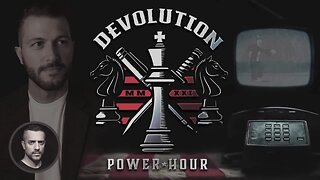 2:10:12
2:10:12
Badlands Media
22 hours agoDevolution Power Hour Ep. 383
62.7K39 -
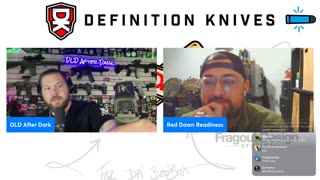 2:40:10
2:40:10
DLDAfterDark
5 hours ago $0.13 earnedDLD Live! Feat. Red Dawn Readiness! Glock FRT's - Striker Fire Safety Concerns - ACE Trigger
11.4K1 -
 2:40:21
2:40:21
BlackDiamondGunsandGear
4 hours agoAre ALL Striker Fired Pistols UNSAFE? // After Hours Armory
34.6K4 -
 6:34:50
6:34:50
SpartakusLIVE
9 hours ago#1 Saturday Spartoons on RUMBLE PREMIUM
102K7 -
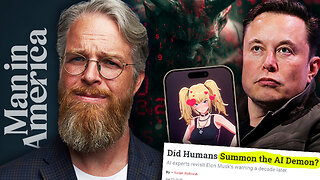 1:04:59
1:04:59
Man in America
9 hours ago“Summoning the Demon” — The AI Agenda Is FAR WORSE Than We Know w/ Kay Rubacek
34.7K21 -
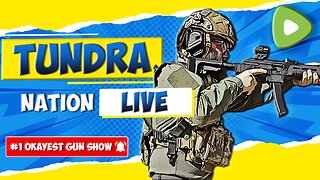 2:16:48
2:16:48
Tundra Tactical
7 hours ago $0.08 earned🎯💥 The World’s Okayest Gun Show 🔫😂 | LIVE Tonight on Rumble!
20.2K -
 3:36:03
3:36:03
Mally_Mouse
1 day ago🌶️ 🥵Spicy BITE Saturday!! 🥵🌶️- Let's Play: Tower Unite!
43.6K2 -
 58:59
58:59
MattMorseTV
7 hours ago $1.29 earned🔴Trump just BROKE Newsom.🔴
59.9K71 -
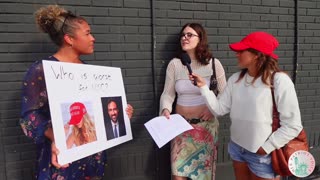 18:14
18:14
Her Patriot Voice
7 hours agoWho Is WORSE for NYC: Trump Girl or Socialist?
39.6K31